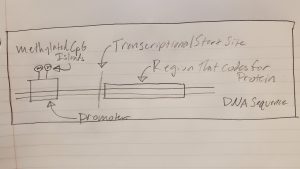Autism Spectrum Disorder (ASD) is incredibly common, with about one in every 59 children being diagnosed, yet varies widely in its manifestation. Diagnosis of ASD is typically made by age two developmental medical check-ups and is based on behavioral observations. Some characteristic behaviors include eye contact avoidance, limited or lack of language development, delay in language acquisition, repetitive body movements,
Nothing in ASD makes sense except in the light of various genetic and epigenetic mutations resulting in problems with synaptic transmission. Dysregulation in gene networks forming the synaptic transmission supporting system is implicated in the development of ASD, but no specific single gene modulation is sufficient to cause ASD symptom formation, therefore more study is needed to elucidate the specific gene-environment & gene-gene interactions giving rise to ASD symptoms.
Inside the Brain
However, before we dive into understanding what is going wrong with the synaptic transmission in ASD, we should first understand synaptic transmission more generally. Broadly speaking, synaptic transmission is how your brain sends and receives information from stimuli both internal and external. How the brain makes sense of all of these signals is still an active and exceedingly exciting area of research. Diving down to the cellular level, synaptic transmission occurs when a neuron sends an electrical signal called an action potential down its axon to the synapse, where the sending neuron physically interfaces with the dendrites of the receiving neuron.
Once at the synapse, the action potential triggers the release of neurotransmitters (figure 1). The exact neurotransmitter and how much neurotransmitter is released is a highly controlled process involving many different proteins and signaling cascades. It’s incredibly interesting, but sadly we won’t be spending any time on it today. Instead, we’ll be focusing on the receiving neuron.

Figure 1: Access for free at https://openstax.org/books/biology-2e/pages/1-introduction
Once the neurotransmitter molecules are released, they diffuse across the synapse and bind to receptors on the dendrites of the receiving cell (figure 1). These receptors then interact with a network of support proteins known as the postsynaptic density (PSD). The PSD is incredibly important in maintaining synaptic transmission. Interestingly, in ASD, deficits in several of the PSD proteins have been identified. Specifically, we’ll be looking at the Shank family of proteins. Shank1, Shank2, and Shank3 all appear in the PSD and help form a sort of molecular scaffolding system to literally support and anchor receptors in the membrane and maintain proper dendritic shape. Specifically, deficits in Shank proteins are known to cause ASD-like behaviors in mice, and analysis of ASD patient samples commonly reveals Shank protein deficits in humans.
In ASD, methylation of the promoter regions of these genes causes a decrease in protein expression (figure 2). Ok, that sentence had a lot of jargon. Let’s break it down. Methylation is a key method of epigenetic gene regulation where specific parts of a gene’s promoter region are given a methyl group by an enzyme called DNA Methyltransferase. Promoter regions are regions of DNA that do not code for protein but offer a site for transcription factors, proteins that help induce gene transcription, to bind to help start transcription of protein-coding regions. Methylation of promoter regions at specific sites known as CpG islands makes the promoter sequence more bulky than usual, thus hindering transcription factors from binding and lowering protein expression (figure 2). This decreased expression of Shank proteins hinders the receiving cell’s ability to translate the signal into action.

Figure 2: Diagram of DNA sequence with methylated CpG islands in the promoter, transcriptional start site, and protein-coding region labeled.
Conclusion
It’s becoming increasingly clear that the interaction between genes and the environment is incredibly important in understanding complex human disorders like ASD. It’s also clear that while much research has been done and every day our knowledge of these conditions is expanding, much more work needs to be done in order to translate our basic understanding of the formation and development of ASD symptoms into treatments or therapies that improve quality of life for those living with ASD. However, in the meantime, support research by reading and sharing information from scientifically valid sources, financially support charities working to improve the lives of people with ASD and their families.
